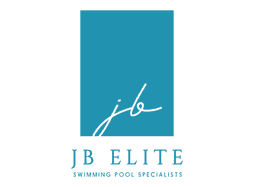On site pool liners – or extreme liners, as they as sometimes known as – are growing massively in popularity, both in the domestic and commercial swimming pool markets due to a growing range of patterns that they are available in, and the fact that there are now on site pool liners that can be used on pools operating up to 37C.

Preparation Of The Pool
For best results, the surface of the pool needs to be as smooth and even as possible. All of the fittings used on the pool, including the light housings, need to be liner type fittings to allow the liner to be clamped to them. Concrete pool fittings are not suitable, and all will need to be replaced or modified depending on the type of fitting.
Liner Installation
On site pool liners are fitted by installing an aluminum L-shaped profile around the top of the pool perimeter. The profile overlaps the top of the pool wall by about 10mm then hangs down the wall by about 60mm. The aluminum profile has a thin plastic coating to protect the aluminium from damp and allows the liners to be heat welded to it. Should the pool coping already be in place these do not need to be lifted, as a thin line can be cut under these using a grinder to allow the profile to slot into this. The profiles are often secured to the walls using a rivet system, straight into the block work or concrete. Although we at JB Elite no longer use this method, as we have found where the rivets are used, the profile is slightly indented where it is pulled to the wall. These indents can slightly show on the liner, especially if a plain liner is being used without a tile band area. To overcome this issue, we recommend the profile is secured using a specialist mastic such as Innotec.
Once the profile is attached, the next step is to felt the walls. A 4mm felt should be secured to the walls below the profile using a sprayed contact adhesive, ensuring there are no creases or excess felt. Once the walls are felted, it’s time to line the wall.
Lining of the swimming pool walls is carried out by trimming the chosen pattern of liner material to the correct width before hanging these on the wall. The liner material is secured to the wall by heating the liner material and the profile around the top of the pool using a specialist hot air gun while using a roller to apply pressure. Once all the walls are hung, the sections of liner on each wall are joined together using the heat gun and roller.
Now it’s time to move on to the floor. The floors of the pool are felted with the same felt as the pool walls. This ensures the base of the pool feels nice under foot as well as preventing condensation between the liner and pool base increasing the lifespan of the pool liner. Now the pool floor is covered in felt it’s time to line the pool base. The rolls of liner material are cut into lengths to the length of the pool and are laid out to cover the pool. Multiple lengths of liner will be required due to the rolls of liner material generally – depending on the chosen material – only being available in around 1.65m width rolls. There are two options for the joints of the liner on the floor; Overlap, where the lengths of material overlap each other by about 80mm and then are heat welded together or Butt Joints, where a strip of the liner material is placed under the joint and the lengths of liner material are pushed up tight to each other. Each of the lengths is then heat welded to the strip of liner material laid below them.
Now the floor is in place the floor section can be heat welded to the wall sections. Once all of the welding has been done, all of the joints have seam sealer applied to them to smooth the joints and provide a second seal.
Tips
If the pool walls or floor are a bit uneven or you don’t want the joints in the liner material to be so prominent, patterned material is much more forgiving than a plain colour.
For more advice, contact JB Elite today.

